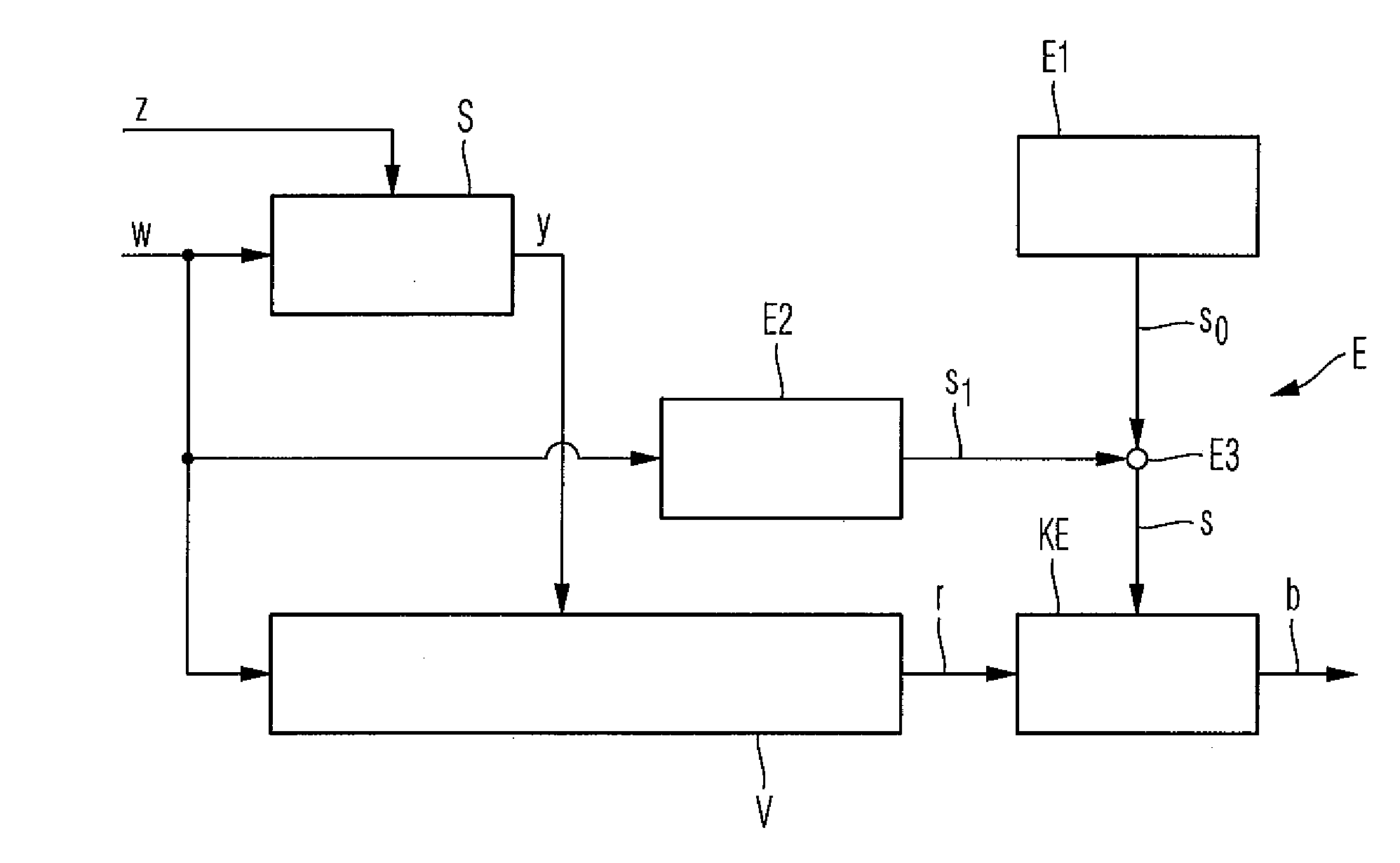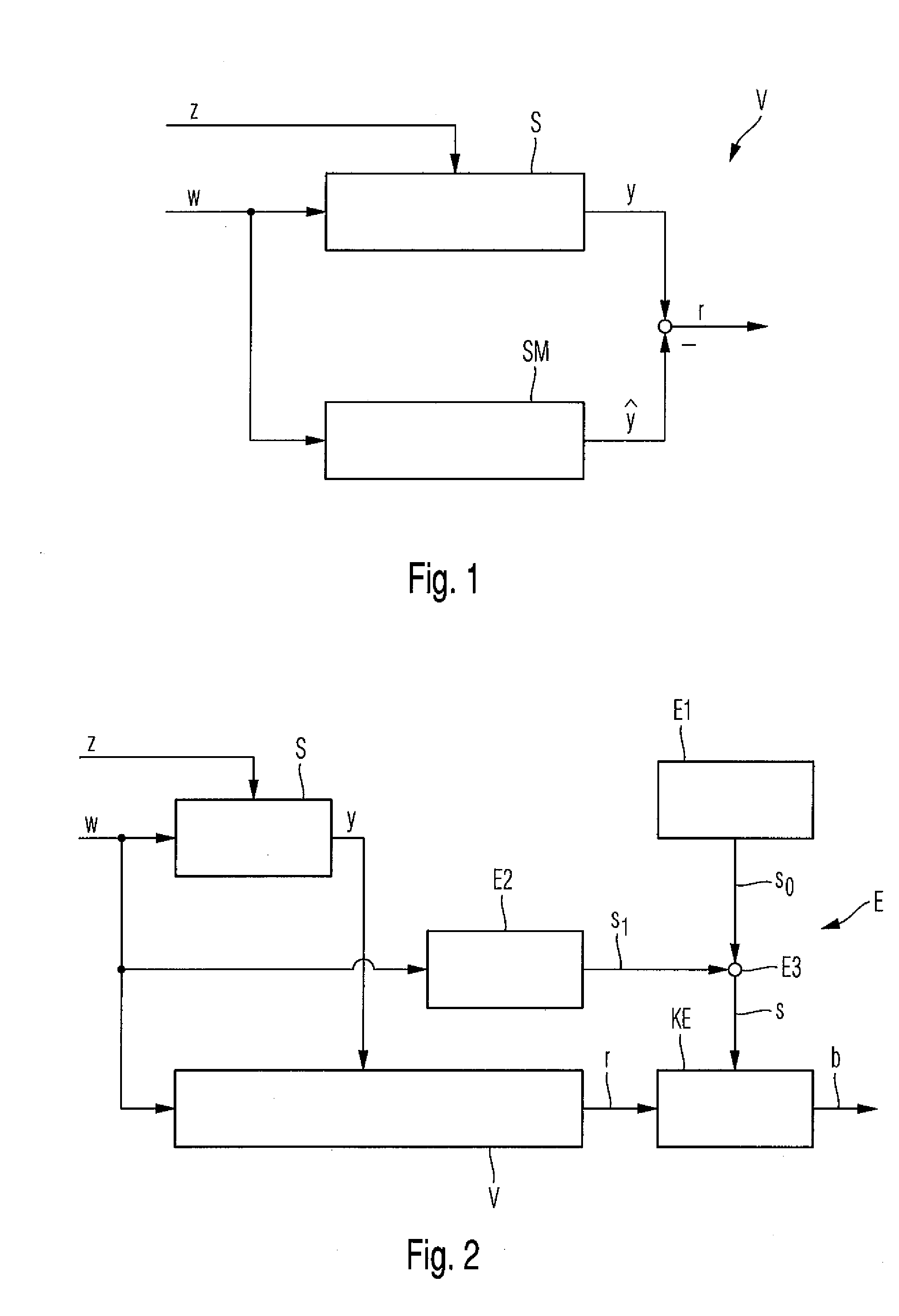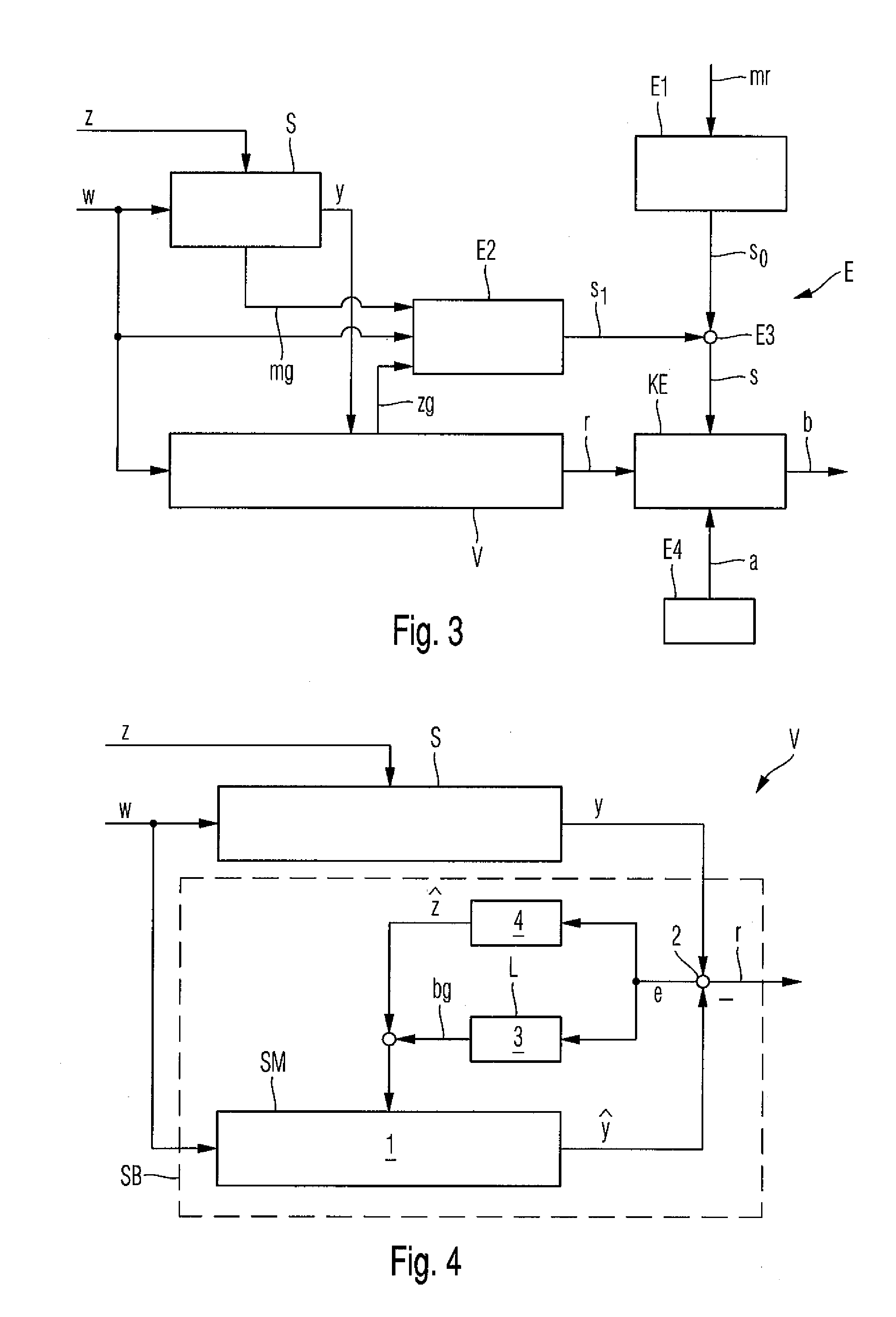Device and method for the residual analysis of a residuum to detect system errors in the system behaviour of a system of an aircraft
a residual analysis and aircraft technology, applied in the direction of testing/monitoring control systems, instruments, nuclear elements, etc., can solve the problems of system errors of this type in the system behaviour, system errors of system behaviour, increased occurrence of sometimes new error scenarios, etc., to prevent incorrect indications and reliable and rapid detection of system errors
- Summary
- Abstract
- Description
- Claims
- Application Information
AI Technical Summary
Benefits of technology
Problems solved by technology
Method used
Image
Examples
first embodiment
[0102]FIG. 2 is a schematic block diagram of a device E for the residual analysis of a residuum r to detect system errors in the system behaviour of a system S of an aircraft. The system S receives a temporally variable reference value w and a disturbance variable z, which reproduces external disturbances, as input variables. As a function thereof, the system S outputs a system output variable y. The device E for residual analysis has at least one apparatus V for generating the residuum r, a comparator unit KE, a first unit E1, a second unit E2, and a third unit E3.
[0103]The apparatus V is adapted for generating the residuum r, the apparatus V generating the residuum r at least as a function of the reference variable w and the system output variable y.
[0104]The apparatus V is for example formed in accordance with one of the embodiments of FIG. 4 or 5.
[0105]The comparator unit KE provides an analysis result b using a comparison of the residuum r with a provided threshold s.
[0106]The ...
second embodiment
[0111]FIG. 3 shows a device E according to the invention for the residual analysis of a residuum r to detect system errors in the system behaviour of a system S of an aircraft.
[0112]The second embodiment according to FIG. 3 has all the features of the first embodiment according to FIG. 2, and therefore to avoid repetition these will not be explained again.
[0113]In the second embodiment of the device E according to the invention, the first unit E1 is set up to provide the constant threshold component s0 as a function of an expected inherent measuring noise mr of the system S.
[0114]In this context, the first unit E1 preferably sets the constant threshold s0 to a minimum value.
[0115]Further, according to FIG. 3, the second unit E2 is set up to provide the adaptive threshold s1 as a function of the temporally variable reference value w, at least one provided measurement variable mg of the system S and / or a state variable zg estimated using a system model SM of the apparatus V.
[0116]Furt...
embodiment 1
[0171]2. The device , wherein the first unit is set up to provide the constant threshold component as a function of an expected inherent measuring noise of the system.
PUM
 Login to View More
Login to View More Abstract
Description
Claims
Application Information
 Login to View More
Login to View More - R&D
- Intellectual Property
- Life Sciences
- Materials
- Tech Scout
- Unparalleled Data Quality
- Higher Quality Content
- 60% Fewer Hallucinations
Browse by: Latest US Patents, China's latest patents, Technical Efficacy Thesaurus, Application Domain, Technology Topic, Popular Technical Reports.
© 2025 PatSnap. All rights reserved.Legal|Privacy policy|Modern Slavery Act Transparency Statement|Sitemap|About US| Contact US: help@patsnap.com



